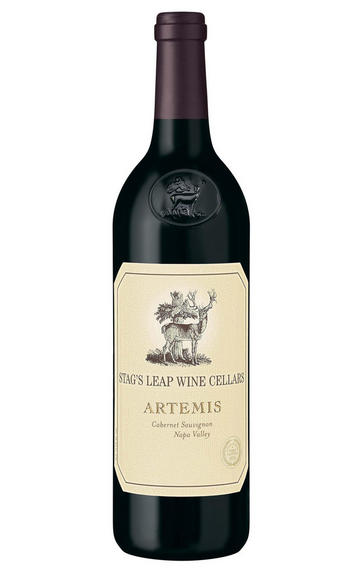
2013 Stag's Leap Wine Cellars, Artemis, Cabernet Sauvignon, Napa Valley, California, USA
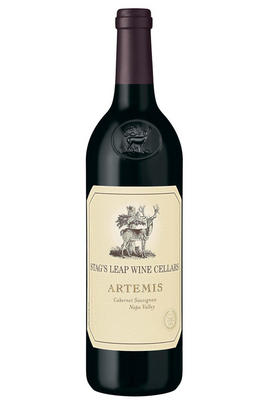
Critics reviews
The 2013 Cabernet Sauvignon ARTEMIS is a simple, straightforward wine to drink now and over the next few years. Sweet red cherry, plum and spice notes are all pushed forward. This is a surprisingly fruity Cabernet for the vintage that is best enjoyed young.
Drink 2015 - 2023
Antonio Galloni, Vinous.com (September 2015)
The 2013 Cabernet Sauvignon Artemis has a dense ruby/purple colour, good solid mouthfeel without the length and richness of it siblings. Nevertheless, this blend of 95% Cabernet Sauvignon, 4% Merlot and 1% Malbec spent 18 months in 29% new French oak and 16% new American oak. It's spicy, earthy and best drunk over the next 8-10 years.
Drink 2015 - 2025
Robert M. Parker, Jr., Wine Advocate (December 2015)
About this WINE
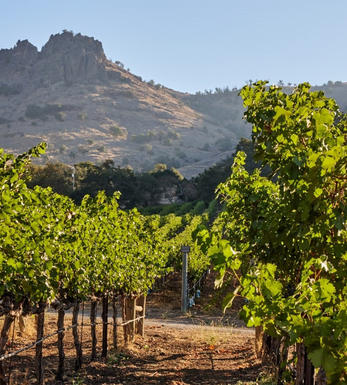
Stag's Leap Wine Cellars
Warren Winiarski gave an up a promising academic career in Chicago to pursue his dream of making wine. He learnt his trade at Robert Mondavi before setting up Stag's Leap Wine Cellars in the heart of the Napa Valley in 1972. Success was instantaneous when the 1973 vintage of Cabernet Sauvignon took first place over leading red Bordeaux at a major comparative tasting in Paris in 1976.
In 1986 Warren Winiarski purchased the adjoining Fay Vineyard which, in what is known today as the Stag's Leap District Appellation, which had been planted by Nathan Fay in 1961. Cask 23, the proprietary red wine blend made only in select vintages, is a blend of Cabernet Sauvignon from the Stag's Leap vineyard and the Fay Vineyards. Warren coined the descriptive phrase 'iron fist in a velvet glove' to describe his polished but sturdy Cabernets. Winemaker Michael Silacci joined the winery in 1995, and together with assistant winemaker Julia Winiarski is producing outstandingly complex, multi layered wines that are amongst the very finest in California.
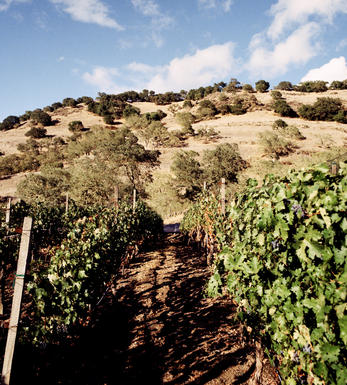
Napa Valley
North Coast's Napa Valley is California's most famous viticultural area (AVA), claiming some of the most expensive agricultural land in the world and producing wines of ‘cult’ status.
Its 16,000 ha of vines lie over a strip (40 miles long-5 miles wide) of diverse soils (clay, gravely, volcanic), with its northernmost end on the side of Mountain Helena and its foot in San Francisco Bay. The valley is framed by two mountains ranges Vaca (to the north) and Mayacamas (to the south), yet the main climatic influence is the cool wind and fog that is sucked in from San Pablo Bay during the afternoon, allowing grapes to ripen slowly and evenly.
The area enjoys a variety of unique microclimates, as temperatures can vary dramatically as much as 15 degrees, from the north to the south end of the valley. These differences have led to the creation of several sub-AVAs (14 in total) including:
Atlas Peak, Chiles Valley District, Diamond Mountain District, Howell Mountain, Los Carneros, Mt. Veeder, Oakville, Rutherford, St. Helena, Spring Mountain District, Stags Leap District, Yountville, Wild Horse Valley and Oak Knoll District. The Calistoga AVA is still pending approval.
Both the “Napa Valley” designation and the sub-AVA name must appear on the wine label simultaneously, with the exception of wines from the Carneros AVA, which is shared between the Napa Valley and the Sonoma County.
Cabernet Sauvignon is the undisputed king of Napa grapes, occupying over 45% of the vineyard acreage, followed by (predominantly) Chardonnay, Sauvignon Blanc, Chenin Blanc, Riesling, Zinfandel, Merlot, Cab. Franc and to a lesser extent Petite Sirah, Sangiovese, Barbera, Dolcetto.
Recommended Producers
Frog's Leap, Dominus, David Ramey, Viader, Stag's Leap Cellars, Paras Vineyards, Heitz.
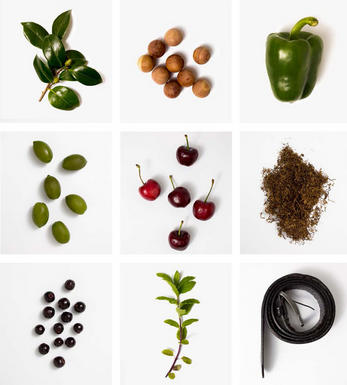
Cabernet Sauvignon
The most famous red wine grape in the world and one of the most widely planted.
It is adaptable to a wide range of soils, although it performs particularly well on well-drained, low-fertile soils. It has small, dusty, black-blue berries with thick skins that produce deeply coloured, full-bodied wines with notable tannins. Its spiritual home is the Médoc and Graves regions of Bordeaux where it thrives on the well-drained gravel-rich soils producing tannic wines with piercing blackcurrant fruits that develop complex cedarwood and cigar box nuances when fully mature.
The grape is widely planted in California where Cabernet Sauvignon based wines are distinguished by their rich mixture of cassis, mint, eucalyptus and vanilla oak. It is planted across Australia and with particular success in Coonawarra where it is suited to the famed Terra Rossa soil. In Italy barrique aged Cabernet Sauvignon is a key component in Super Tuscans such as Tignanello and Sassicaia, either on its own or as part of a blend with Sangiovese.


Buying options
Add to wishlist
Description
Warren Winiarski is onto a winner with Artemis, it is consistently a wine of immense drinking pleasure and in an excellent year like 2013 that appeal has, if anything, been enhanced. Warm, soft mulberry and new leather notes are accompanied by fleshed out blackcurrant and crushed velvet impressions.
The taste buds are then saturated by a broodingly dark deep cherry note, sweet kirsch ripeness and pencil shaving touches that unfold into a soft smokiness. Before one sinks too deeply into this veritable ‘comfy armchair’ of a wine a revitalising streak of acidity wakes the senses with a cherry stone lift. Fine, lightly textured and medium bodied tannins give a gentle framework before flowing through to a warm fruit and smooth buttery oak finish.
Drink 2017 - 2023
Peter Newton, Private Account Manager, Berry Bros & Rudd
wine at a glance
Delivery and quality guarantee